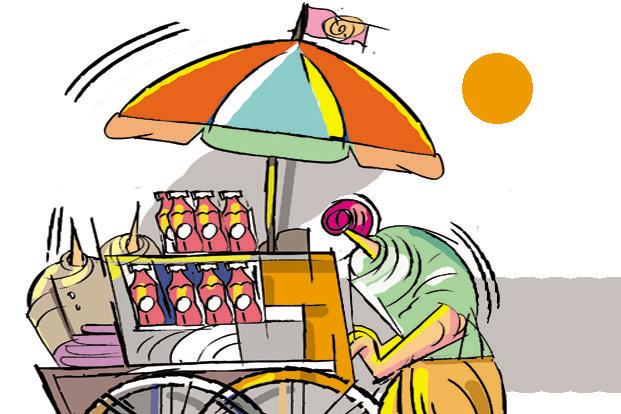The roadside chaiwala, the panwala or the golgappewala are quintessential parts of India’s streets, yet these street entrepreneurs have for long operated their small enterprises without any institutional support or legal safeguards. In 2014 an attempt was made to legitimise them through the Street Vendors (Protection of Livelihood and Regulation of Street Vending) Act, which vouched to safeguard the livelihood interests of street vendors while ensuring the utility of public spaces. The bill tries to protect the livelihoods of the street vendors by creating ‘vending zones’, issuing certificates and imposing certain restrictions on street vending, to make it more systematic and organized.
One of the important aspects of this act is the creation of a Town Vending Committee(TVC) which has members like the municipal commissioner, representatives of street vendors, local authorities, planning authority, resident welfare association and other traders associations. In order to undertake street vending, one must register with the TVC in their town/zone, after which he/she may apply for a vending certificate.
It has been almost five years since the Act laid out norms to give street vendors their much-needed voice. So street vendors now have the right to participate in decision making and the freedom to carry out their trade without harassment, right? Centre for Civil Society’s newest research publication would prove otherwise. In February 2019 Centre for Civil Society (CCS) published its annual Progress Report on Implementing the Street Vendors Act 2014. The Report found the implementation of the said act to be ‘sluggish’. With 4 states yet to even notify the rules for its implementation- the very first step in the implementation of the Act- and six states which have already notified a scheme have no vendor representation in its TVCs. While the lack of vendor representation makes the existence of a representative body meaningless, many of the TVCs with vendor representations have been formed without vendor elections and instead have been nominated or chosen, in direct violation of the provisions of the act.
Furthermore, the executional paralysis of this Act, almost 5 years after it came into force has cost the vendors dearly. While states like Tamil Nadu, Mizoram, Chandigarh and Rajasthan have fared well in the 11 step implementation process of the Act, states like Bengal and Nagaland are the worst performers with only 5 TVCs across 250 towns. The lack of penalties for non-compliance has encouraged complacency among the State Governments who have failed to deliver on the directives of the Act even after almost five years of its passing.
While there are many states which are yet to initiate efforts of implementation, even the ones that have initiated the implementation are not faring any better, given the misguided nature of implementation. A case study within the same report on the city of Gurugram in Haryana, which has formed one TVC, is evidence of the grim picture that haphazard implementation has created in the Millenium City. Despite a mandated 40% representation of Street Vendors, it has only a 14% representation of street vendors. This lack of representation explains the erratic decisions such as the one taken in 2018 which forced street vendors to displace their trade on a one week notice. This was followed lawsuits filed by vendors, who had no power in the TVC created for them.
The delay in the effective implementation and the leniency shown towards this delay shows how most states and Municipal authorities tend to disparage this, as it concerns a section of our society that has little political prominence. Executional incompetence has left the policies ineffective and given local authorities a go-ahead to take advantage of the lack of a stricter and more organized framework.
The Act, if implemented well has the potential to free street vendors from the harassment and extortion from authorities that they have faced for years. During an interaction with an elected member of a TVC, Mr Dinesh Dixit from the Sarojini Nagar Market under the North Delhi Municipal Corporation (NDMC) we saw the good that this Act could do. “I have been vending for over 40 years, and earlier I too would run whenever the municipal authorities came to evict us. But today, as a TVC member, I sit on the same table as the NDMC Commissioner to discuss the way forward to ensure the welfare of the vendors”, said Mr Dixit with a proud smile. This displays the active participation that vendors can afford in decision making through a TVC.
Yet, implementation delays ensure that majority these hawkers are sentenced to a lifetime of poverty and misery from the very beginning. The License Raj may have ended for the bigger Corporations in India, but it sure does exist for the poor street vendors even today. Despite street vending being the source of livelihood for an estimated 1 crore people; everyday harassment, evictions and lack of representation in decision making remain the truth of the matter.
Read more : https://spontaneousorder.in/the-chaiwallah-of-the-street-also-deserves-to-be-heard/
Post Disclaimer
The opinions expressed in this essay are those of the authors. They do not purport to reflect the opinions or views of CCS.






